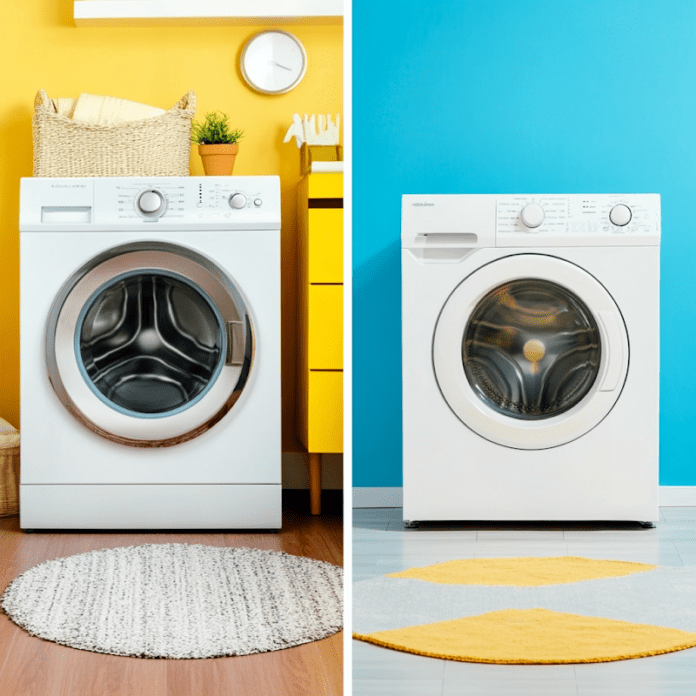The True Economics Behind Your Kitchen Catastrophes
In the world of consumer choices that bombard us daily, few decisions have more financial impact than how we handle our failing household appliances. Finding reputable local emergency appliance repair services can transform what feels like an inconvenient expense into a surprisingly smart financial strategy. Most consumers don’t realize that contacting certified appliance repair services with same-day appointments at the first sign of trouble often represents one of the most significant money-saving decisions they can make all year. What initially seems like just another household expense actually functions more like a strategic investment with multiple financial returns that aren’t immediately obvious until someone breaks down the surprising economics involved.
The Celebrity Approach to Appliance Management
Celebrities might seem worlds apart from average consumers when it comes to lifestyle choices, but interestingly, many A-listers have embraced appliance longevity as part of their sustainability practices. While interviewing household names for lifestyle segments, a recurring theme emerges around thoughtful consumption rather than constant replacement.
One Oscar-winning actress known for environmental activism maintains a 15-year-old premium refrigerator in her Malibu home through regular maintenance rather than replacing it with each kitchen update. Her perspective highlights the growing trend of viewing quality appliances as long-term investments worthy of proper care rather than disposable items to be replaced at the first sign of trouble.
A celebrity chef whose restaurant empire spans three continents still uses the same commercial-grade range he purchased when opening his first restaurant, having maintained it through strategic repairs rather than replacement. His approach reflects the professional kitchen mentality where equipment is maintained rather than discarded – a philosophy increasingly adopted by home cooking enthusiasts seeking to maximize their kitchen investments.
The Hidden Financial Hemorrhage in Your Kitchen
Most homeowners remain unaware of the cascading costs that malfunctioning appliances silently add to household expenses long before complete failure occurs.
An inefficient refrigerator with failing seals or compressor issues typically consumes 30-60% more electricity while struggling to maintain proper temperatures. This translates to approximately $10-25 in additional monthly utility costs that most consumers never connect to the appliance’s condition. Over just six months, these hidden energy costs often exceed repair expenses, effectively making the repair decision pay for itself even before considering the avoided replacement cost.
Washing machines with worn bearings or unbalanced drums create equally invisible financial drains. The excess vibration and inefficient spinning not only increases energy consumption but also shortens the lifespan of clothing through increased wear and improperly removed detergent. Considering that the average American household spends over $1,800 annually on clothing, even a 10% reduction in garment lifespan represents a significant hidden cost.
Dishwashers with spray arm issues or clogged filters not only clean poorly but typically use more water and electricity while delivering worse results. The resulting hand-washing or re-washing of dishes creates additional utility expenses alongside the obvious inconvenience, often adding $5-15 monthly in unnecessary costs that could be eliminated through timely repairs.
The Preservation Calculation: Food Waste as Hidden Cost
Perhaps nowhere is the financial case for prompt appliance repair services more compelling than with refrigeration equipment, where functionality directly impacts food preservation.
The average American family of four wastes approximately $1,600 in food annually, with refrigerator performance playing a significant role in this statistic. A refrigerator operating just 5-10 degrees warmer than its setting due to repairable issues dramatically accelerates food spoilage. Even a single incident of mass food loss during summer months can cost $200-400 in wasted groceries – often exceeding the entire repair cost while creating additional environmental impact through unnecessary food waste.
Commercial refrigeration statistics provide even more compelling evidence for this phenomenon. Restaurant industry data shows that properly maintained commercial refrigeration units reduce food spoilage by 30-40% compared to poorly maintained units operating at the same temperature setting. This same principle applies directly to home refrigeration, where inconsistent cooling often goes unnoticed until substantial food waste has already occurred.
The Warranty Extension You Didn’t Know Existed
Many consumers remain unaware that proper maintenance and timely repairs actually preserve warranty coverage on many major appliances, creating another layer of financial protection that repair skeptics often overlook.
Most extended warranty programs include clauses requiring reasonable maintenance and prompt attention to developing issues. The refrigerator making unusual noises that goes unreported for months before major failure may face warranty claim denial based on “neglect” or “failure to address known issues” – standard exclusions in most warranty contracts. Documented repair service, even for minor issues, establishes a record of proper maintenance that strengthens warranty claims for subsequent problems.
Manufacturer warranties often contain similar provisions, particularly for premium appliance brands where proper care is considered part of the ownership responsibility. The documentation provided by authorized repair services creates a maintenance history that supports rather than undermines warranty coverage, potentially saving thousands if more significant issues develop later.
The Smart Consumer’s Guide to Repair Decisions
Not all repair scenarios offer equal financial benefits, making strategic decision-making crucial for maximizing the return on repair investments.
The 50% rule provides a reliable framework for repair versus replacement decisions. When repair costs exceed 50% of replacement cost for appliances in the second half of their expected lifespan, replacement often makes better financial sense. Conversely, repairs costing less than 50% of replacement for appliances in the first half of expected lifespan almost always represent the better financial choice.
Energy efficiency improvements should factor into calculations for older appliances. A refrigerator manufactured before 2000 may justify replacement rather than repair due to the substantial efficiency improvements in newer models. However, this calculation changes dramatically for appliances manufactured after energy efficiency standards tightened around 2010, where modest efficiency gains in newer models rarely offset the financial and environmental costs of premature replacement.
Repair timing significantly impacts cost outcomes. Minor issues addressed promptly typically cost 50-75% less than the same repairs after component failure has caused collateral damage to other systems. The washing machine bearing issue that costs $200 to repair when first noticed can escalate to a $600-800 repair involving motor and drum components if left unaddressed, completely changing the repair-versus-replace calculation.
Conclusion: The New Consumer Wisdom
The throwaway culture that dominated consumer behavior for decades has begun giving way to more financially and environmentally sustainable approaches to household management. Savvy consumers increasingly recognize that the repair-versus-replace decision represents a meaningful financial crossroads with impacts extending far beyond the immediate price comparison.
By understanding the true economics of appliance functionality, including energy consumption, food preservation, clothing longevity, and warranty protection, homeowners can make significantly better financial decisions about when to repair and when to replace. These considerations transform what once seemed like simple repair expenses into strategic investments that often pay for themselves multiple times over through various direct and indirect savings.
In an era of increasing environmental consciousness and economic uncertainty, this more nuanced approach to appliance management represents an important shift in consumer wisdom – one that benefits both household budgets and planetary resources while challenging the planned obsolescence model that has dominated manufacturing for far too long.





